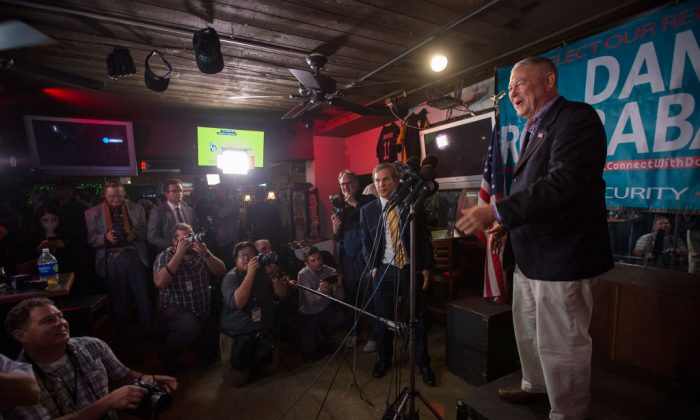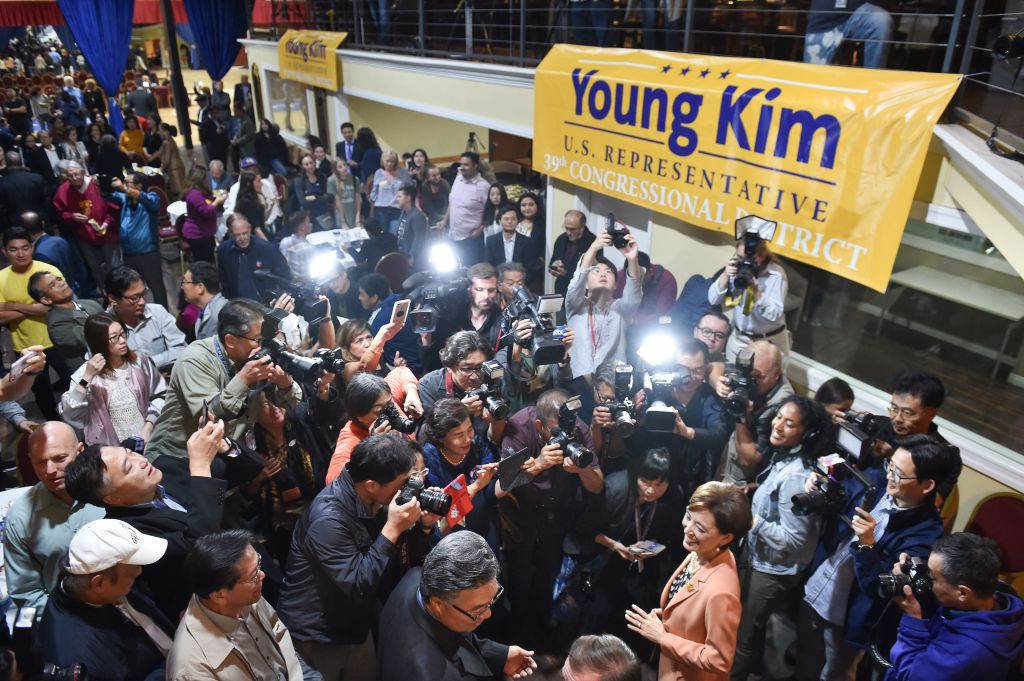The Great Conservative Suicide Pact
Free markets only work when their benefits are broadly distributed. You wouldn’t know that from the kind of proposals that conservative idea factories are pushing out these days.

Joel Kotkin
Updated 07.14.19 11:30AM ET Published 07.12.19 11:07PM ET
Republicans have been celebrating their good fortune as Democrats vying for the presidential nomination propose free medical care for undocumented people and the elimination of private health insurance, and open borders, not to mention reparations for slavery and the near-term elimination of fossil fuels. Add it up, and it may be enough to keep Doctor Demento in the White House for four more years.
Those same Republicans, though, have said little about free-market policies that undermine their own middle-class base while bolstering the very forces that are arrayed to wipe the GOP off the political map.
Call it a conservative suicide pact and you won’t be far off. Conservative free-market fundamentalists with disproportionate influence on GOP policy are advancing plans that would divorce capitalism from the small property owners whose pieces of property secure the system’s popular support.
Start with the suburban middle class families who make up GOPs historic base, and remain its bulwark. The expansion of homeownership, from 44 percent in 1940 to 63 percent in the 1960s, keyed the GOP’s post-New Deal resurgence as ethnic groups who had always voted Democratic now had something to protect, albeit sometimes with a racial agenda, thanks to an economic system that had helped them reach their aspirations.
Yet many free-market conservatives in places as diverse as Minneapolis and Oregon are now embracing efforts to eliminate single-family zoning, as conservative analyst Randall O’Toole has noted.
That includes California State Senator Scott Wiener’s effort to force high-density on residential areas by allowing fourplexes on virtually any parcel, which produced one of the strangest alliances in recent political history. Free market advocates—many of them funded by the Koch brothers—linked arms with left-wing and green activists reprising the arguments made in the Soviet Bloc against middle-class single-family neighborhoods. Victoria Fierce, one of the leaders of the YIMBY pro-density lobby in California, has even argued that density is better since it promotes a “collectivism”—as beloved by Bolshevik town-planners.
The bill failed, at least this year, due to popular opposition from the grassroots in both Republican and Democratic-controlled areas.
A few free-market activists, notably Market Urbanism’s Scott Beyer, admit the inconsistency of backing bans on single-family zoning while the construction of such housing in the suburban periphery is prohibited. To be sure over-restrictive local zoning plays a role in raising prices, but the chief culprits have been “urban growth boundaries” and other measures that tend to increase land prices throughout an urban area. Wherever such policies are in place, housing costs tend to be considerably higher.
For the left, the assault on single-family homes at least makes political sense. The decline of homeownership among millennials could create a permanent renter class, with little stake in capitalism. They would logically back the progressive left in their quest for government housing subsidies and rent control.
All the right gets is more money to a few big-money funders, who hope that by devastating ownership they could create a Wall Street-dominated “rentership society.” This vision, widely shared by some tech firms, would see people remaining renters for life, enjoying their video games or houseplants when not coding or doing “gig” jobs. Eventually this whole generation will curse conservatives, rightly, for undermining their bourgeois aspirations while pimping for those of the investor class.
This isn’t the only place where the free-market right has embraced the tech oligarchs. When Senators Jeff Hawley (R-MO) and Mark Warner (D-VA) proposed legislation to curb the oligarchs’ control and sale of our personal information, a virtual chorus line of right-wing groups—R Street, AEI, Heritage, Cato, and the Competitive Enterprise Institute—rose to Big Tech’s defense.
Most of these think tanks, not surprisingly, now get funding from the likes of Google and Facebook. Conservatives like Hawley, as well as many progressives, understand the threat posed by ceding control of the internet to a handful of quasi-monopolies—but many libertarians don’t see anything wrong with a few ultra-rich people controlling the internet, just like they don’t see anything wrong with them owning most property.
This principled inanity is even more remarkable given that the five tech giants—now the world’s five wealthiest companies—have been “de-platforming” conservatives and others who offend their ideological sympathies. Google, as a new article in American Affairs suggests, is rigging the algorithms that control search to favor not just their commercial interests but also their ideological predilections.
By backing the oligarchs, free-market ideologues are needlessly serving as what Lenin called “useful idiots”.
Rather than try to appeal to investors and tech moguls, the GOP’s best hope lies in rebuilding its identity as the party of middle-class homeowners—a group that tends to vote far more heavily than renters. Libertarian positions on issues like open borders, housing and the internet may sound great in think tanks or college campuses, but they are not popular among middle-income people who care about their businesses and communities.
Rebuilding that identity will require changes not only for the free-market right, but also many Trumpettes. By every measurement the GOP is losing support among demographically ascendant millennials and minorities; eventually the party will run out of old white people. Voters will only continue to reject the socialist alternative if they feel a stake in the capitalist system. Traditional right-wing social policies, such as the extreme anti-abortion laws in Alabama, do not play well with socially moderate voters in the burgeoning Sunbelt and Midwestern suburbs.
The good news for Republicans is that the Democratic Party seems hopelessly committed to an expanding state, open borders, the promotion of dense rental housing and ever more lavish subsidization of ever larger segments of the population. To win, the GOP must appeal to an increasingly diverse base of middle-class taxpayers who, after all, will be forced to pay for the generosity of “free” college, cancelled student debt and the absurdly expensive Green New Deal.
Rather than speak about abstract concepts of “liberty” or the beauties of Austrian economics, the salvation of capitalism and conservative politics lies with addressing the specific class interests of those who either possess their own property or have a reasonable hope that they or their offspring may do so in the future. The current strategy of seeking to undermine the daily life of suburban homeowners, as well as supporting those committed to silencing conservative thought, represents an exercise not only in futility but, ultimately, self-destructionThe Great Conservative Suicide Pact
Free markets only work when their benefits are broadly distributed. You wouldn’t know that from the kind of proposals that conservative idea factories are pushing out these days.














 Paul Ryan called California’s election system “really bizarre.” Late “harvested” votes led to GOP losses around the state.Photo: Cliff Owen / Associated Press
Paul Ryan called California’s election system “really bizarre.” Late “harvested” votes led to GOP losses around the state.Photo: Cliff Owen / Associated Press
